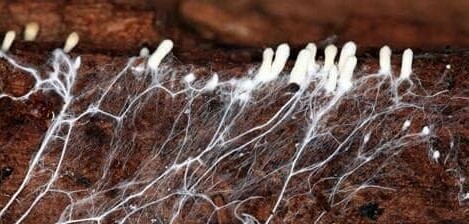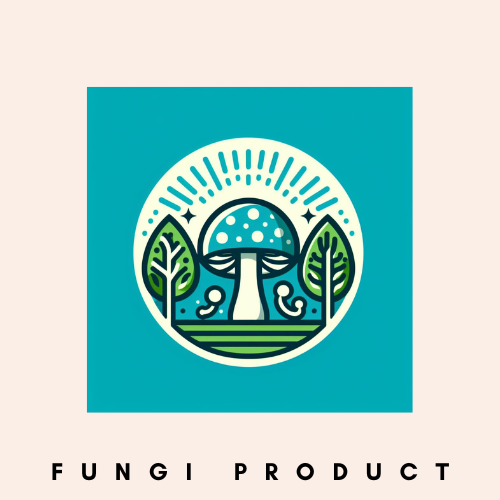I like to open your eyes to what is happening beneath our nose and feet …
This website is put online with the intention to inform people of the existence of mycelium – the root network of fungi – and what an unexpected number of applications there are with the force of a fungi. We are here to sympathize with the scientists and industries that bring revolutionary products that are an answer to the need to try as much as we can to bring a sustainable and more green life in production and consumption.
I want to introduce you to mycelium, the often-overlooked foundation of our natural world.
Beneath our feet, a tiny fungal threads weave a complex web vital for the well-being of countless organisms, including us. This hidden network is so crucial to life on Earth that without it the entire ecosystems would falter.
The crucial role it plays in maintaining the balance of ecosystems, mycelium serves as the unsung hero by creating symbiotic partnerships with plants, allowing for more efficient water and nutrient uptake.
Its intricate connections transform the soil into a thriving hotspot for various life forms.

Mycelium – the root work of fungi – can replace plastic propylene and even concrete
The vastness and complexity of these fungal networks are profound. With recent advancements in mycology, we’re beginning to uncover the secrets that mycelium has held for millennia.
These discoveries are reshaping our understanding of the natural world, revealing that life, as we know it, is deeply interconnected through these unseen networks.
Logic that maintaining and protecting these delicate fungal threads is more than an environmental concern. We have to realise it is a necessity for sustaining life on this planet.
The mycelium magic and its remarkable networks nurture the ground and every step we take above them.
Mycelium Magic: How Fungi’s Lattice Sustains Our Ecosystem
Think of mycelium as the internet of the forest floor, connecting countless organisms in a living, breathing network. Its impact on soil health is monumental, acting as the steward of our earth’s fertility. Mycelium works tirelessly, unseen and unsung, breaking down fallen leaves, decaying wood, and even complex pollutants into simpler substances that nourish plant life.
What’s fascinating is that this mycelial network is nature’s ultimate recycler. It transforms death into life by decomposing organic waste. This process not only returns vital nutrients to the ecosystem but also helps to control pathogens, ensuring a balanced and resilient environment. Strong, healthy mycelial networks can mean the difference between life and barrenness in our soils.
Moreover, mycelium is crucial for water retention in the soil. These networks increase the soil’s capacity to hold water like a sponge, reducing the need for irrigation and protecting plants during periods of drought. Imagine these threads as intricate webs weaving through the soil, capturing every drop and redistributing it efficiently to where it’s needed most.
As the backbone of a flourishing ecosystem, mycelium provides a habitat for a myriad of microorganisms. Each spoonful of mycelium-rich soil is teeming with bacteria, insects, and other tiny life forms, all of which contribute to the biodiversity necessary for a healthy planet.
Mycelium support life and enhances it, enriching biodiversity and sustaining the ecosystems we depend on. As we stand at the cusp of ecological breakthroughs, it will be this magic beneath our feet that inspires new ways to think about sustainability and conservation.

Fungi threads …. growing endlessly into eternity have an unknown power
Harnessing the Mycelial Web: Innovative Uses in Technology and Sustainability
Now let’s leave the fascinating natural role and have a look at mycelium in other amazing roles.
It stands at the forefront of innovative development. Researchers and entrepreneurs are tapping into mycelium’s potential to revolutionize industries with sustainability in mind.
Imagine buildings made from fungi bricks, insulated with materials grown from fungi, or packaging materials engineered from mycelial networks that decompose with no harm to the environment.
These are not just ideas anymore, they’re real-world applications that are already taking shape.
One of the most promising applications of mycelium is in bioremediation, the process of using fungi to decontaminate polluted environments. Mycelium’s natural ability to break down harmful substances into harmless ones is a game changer in the effort to clean up oil spills, pesticides, and industrial waste.
It’s a testament to nature’s efficiency that a network often hidden beneath our feet can offer solutions to some of the most pressing environmental challenges.
The future of mycotechnology is vibrant with potential, ranging from medical breakthroughs using fungal compounds to fight disease, to agricultural innovations where mycelium aids in pest control and plant health. Each step forward in this field not only underscores the versatility of fungi but also speaks to our growing understanding of how interconnected life systems benefit us all.
I invite you to explore this website and read frequently published posts handling all kind of solutions in which the technology and the possibilities of Mycelium are taken under the loupe.
Despite our excitement we need to realize that the road ahead is full with challenges.
Scaling up these biotechnologies for global impact requires investment, research, and a willingness to embrace nature’s solutions. But if the history of mycelium research has taught us anything, it’s that the opportunities are as vast as the networks themselves.
So my question to you today is, how might you incorporate the power of mycelium into your personal life or work? There’s a lot of opportunity in this unassuming yet powerful network.
As we advance, it’s crucial we maintain a balance between innovation and ecological preservation. Understanding and respecting the role of mycelial networks in our ecosystem will be key to implementing these biotechnologies responsibly. I really hope that you’re as excited as I am about the prospects of mycelium. Let us watch this space grow, and let us be the conscientious stewards of these incredible fungal networks.

André Raymond
Pictures : Getty Images
